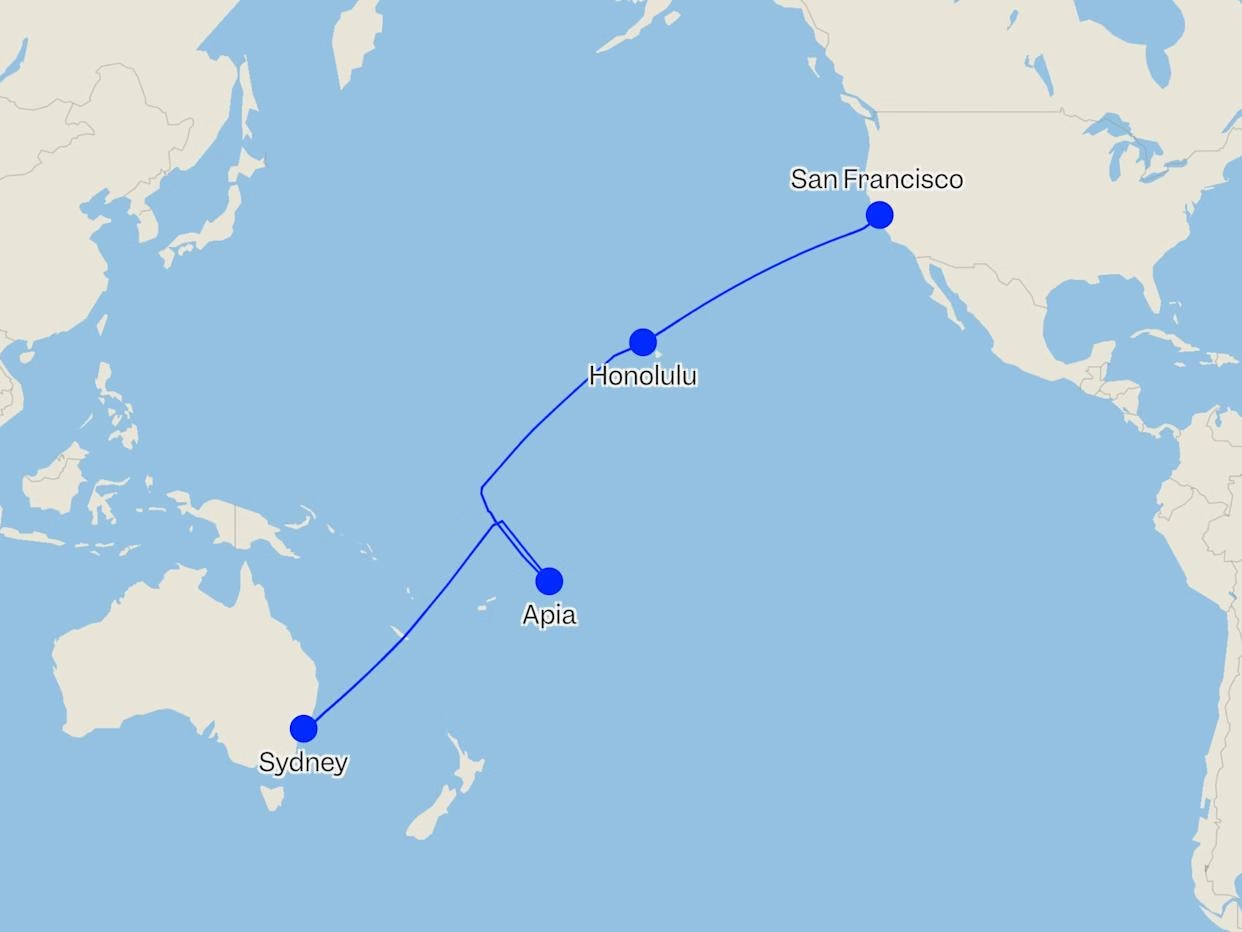—
United passengers endured a double diversion and a 28-hour journey over the Pacific
For 243 passengers aboard United Airlines Flight 211, what was meant to be a routine transpacific journey from San Francisco to Sydney turned into an exhausting 28-hour ordeal that left even seasoned travelers shaken. From fuel leaks to an emergency landing in a military outpost, this was not a journey anyone would forget soon.
The Boeing 787 Dreamliner was scheduled to depart San Francisco International Airport at 10:40 p.m. local time on Monday evening, with an expected arrival in Sydney 15 hours later. Spirits were high aboard the aircraft, filled with families heading for vacation, business travelers aiming to reach meetings, and students returning home for the semester break. But just three hours into the flight, over the vast Pacific Ocean, things started to go wrong.
Trouble at 35,000 feet
“We had just finished dinner service,” said Angela Peterson, a 38-year-old nurse from Oakland. “Then the captain came on and said there was a mechanical issue. His voice was calm, but you could feel the tension.”
Flight 211 had developed a fuel imbalance between the left and right tanks — an issue that, while not immediately dangerous, required caution. The pilots diverted the flight toward Honolulu, Hawaii, to assess the situation on solid ground.
The Dreamliner touched down safely in Honolulu shortly after 3:00 a.m. local time. Passengers remained onboard for nearly two hours while ground engineers evaluated the aircraft. The flight crew initially assured passengers that they would be back in the air soon.
“I thought, okay, maybe we’ll be a few hours late,” said Steve Rothman, a tech executive traveling to a conference in Melbourne. “But then the cabin lights came on, and they told us to disembark. That’s when we knew this was turning into a mess.”
Unexpected layover in paradise
In any other situation, an unexpected layover in Hawaii might seem like a welcome break. But most passengers were shuffled into the terminal with little information and told to wait.
“They gave us meal vouchers, but all the restaurants were closed. It was 4 a.m. in the middle of the week,” said Olivia Huang, a university student who had already been traveling for over 20 hours from Boston.
United Airlines issued a statement saying, “The safety of our customers and crew is our top priority. Flight 211 was diverted out of an abundance of caution due to a potential fuel imbalance. We are working to reaccommodate all customers as soon as possible.”
After six hours on the ground, a replacement aircraft was flown in from Los Angeles. But just before boarding, news came that Sydney’s air traffic controllers were facing a ground delay due to unexpected storms. Flight 211 was rescheduled to depart at 4 p.m. local time, nearly 14 hours after landing in Honolulu.
Second attempt, second diversion
Passengers finally reboarded and settled in for what was expected to be a smooth 10-hour journey. But fate had other plans.
Five hours into the second leg of the flight, just as the aircraft was entering the Western Pacific airspace near Fiji, a warning light in the cockpit signaled a problem with one of the hydraulic systems.
“It was surreal,” Peterson recalled. “The captain came on again and said we’d be diverting. People were stunned. We hadn’t even made it halfway.”
This time, the diversion was to Wake Island — a remote U.S. military base in the middle of the Pacific Ocean. The island, which has no commercial airport, rarely hosts civilian aircraft, let alone a 787 filled with hundreds of confused and tired passengers.
According to aviation experts, Wake Island’s 9,800-foot runway is one of the few in the region capable of safely handling an aircraft of that size. United Airlines later confirmed that the diversion was made in coordination with the U.S. Air Force and the FAA.
Stranded in the middle of nowhere
The conditions on Wake Island were far from ideal. Passengers were not allowed to disembark due to security restrictions on the base. Military personnel delivered bottled water and ration packs to the cabin while maintenance teams were flown in from Guam.
The crew, who had by now exceeded their allowable duty hours, could no longer continue flying. Passengers were forced to wait another 5 hours in the aircraft cabin as logistics were worked out. Finally, a third plane was dispatched — this time from Tokyo — to carry the exhausted travelers the rest of the way.
“We were out of movies, out of snacks, and honestly out of patience,” said Rothman. “People were crying. One guy started shouting that he was cursed.”
Final leg, emotional arrival
The replacement aircraft arrived just after midnight local time. The weary passengers boarded for the final time and reached Sydney at 8:15 a.m. on Wednesday — a full 28 hours after leaving San Francisco.
Families waiting at Sydney Kingsford Smith Airport broke into applause as the passengers streamed through the arrival gates. Some were in tears, others too dazed to speak.
“It felt like we’d crossed the Pacific three times,” said Huang. “I just want to sleep for a week.”
Compensation and fallout
United Airlines has announced that all affected passengers will receive full refunds, complimentary round-trip vouchers, and 20,000 frequent flyer miles. Still, the incident has raised questions about aircraft readiness and contingency planning for ultra-long-haul routes.
“This is a case study in how cascading technical problems and poor communication can quickly turn a flight into a nightmare,” said Marla Jennings, an aviation analyst based in Chicago. “Thankfully, there were no injuries, but reputationally, this will sting.”
Some passengers have already filed complaints with the Department of Transportation, and several are reportedly considering a class-action suit over the handling of the situation.
As for the crew of Flight 211, they were praised for their professionalism under pressure.
“I’ve been flying for 22 years,” one flight attendant was overheard telling a passenger. “But this? This was one for the books.”
—
